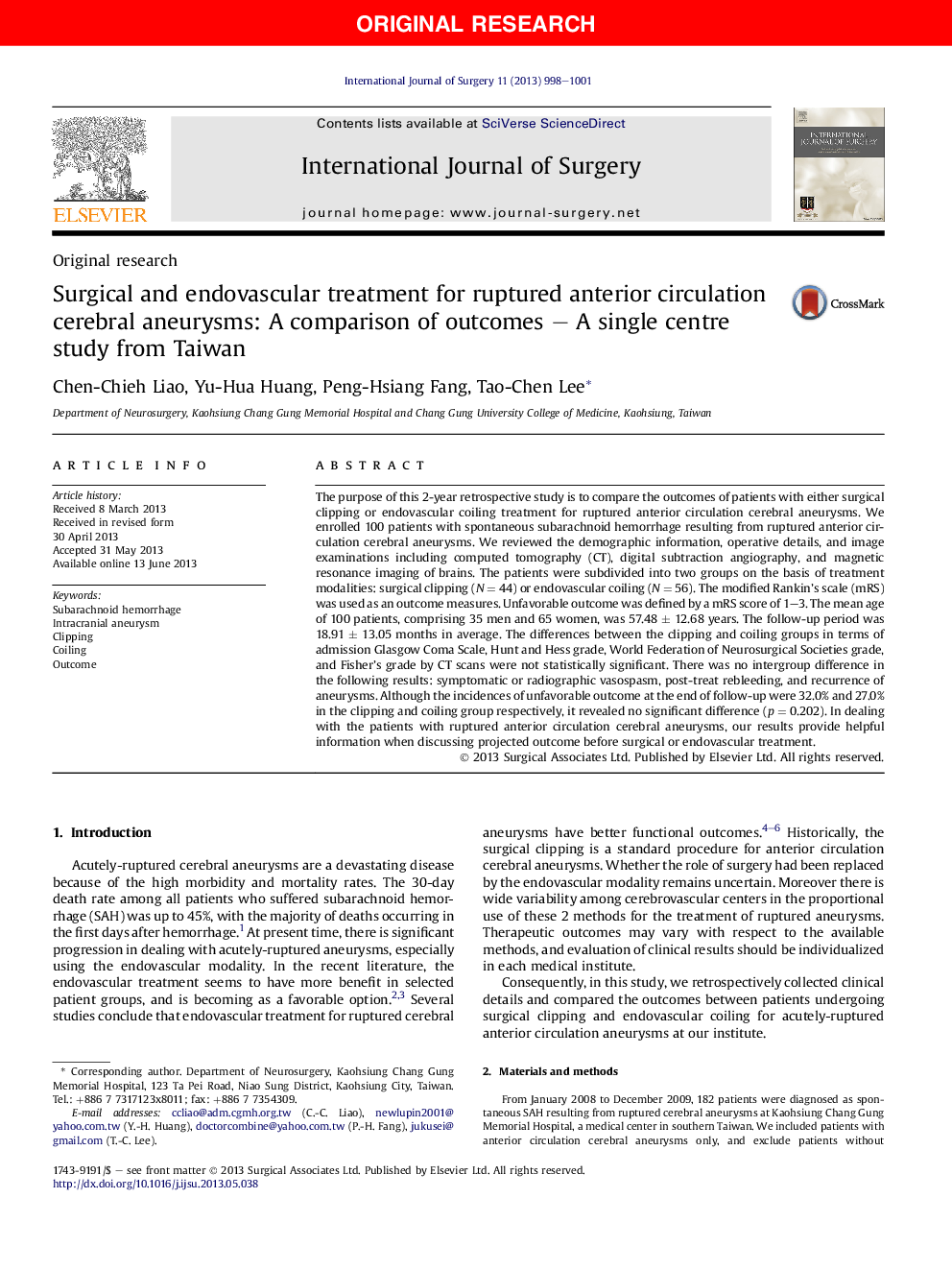| Article ID | Journal | Published Year | Pages | File Type |
|---|---|---|---|---|
| 4286771 | International Journal of Surgery | 2013 | 4 Pages |
The purpose of this 2-year retrospective study is to compare the outcomes of patients with either surgical clipping or endovascular coiling treatment for ruptured anterior circulation cerebral aneurysms. We enrolled 100 patients with spontaneous subarachnoid hemorrhage resulting from ruptured anterior circulation cerebral aneurysms. We reviewed the demographic information, operative details, and image examinations including computed tomography (CT), digital subtraction angiography, and magnetic resonance imaging of brains. The patients were subdivided into two groups on the basis of treatment modalities: surgical clipping (N = 44) or endovascular coiling (N = 56). The modified Rankin's scale (mRS) was used as an outcome measures. Unfavorable outcome was defined by a mRS score of 1–3. The mean age of 100 patients, comprising 35 men and 65 women, was 57.48 ± 12.68 years. The follow-up period was 18.91 ± 13.05 months in average. The differences between the clipping and coiling groups in terms of admission Glasgow Coma Scale, Hunt and Hess grade, World Federation of Neurosurgical Societies grade, and Fisher's grade by CT scans were not statistically significant. There was no intergroup difference in the following results: symptomatic or radiographic vasospasm, post-treat rebleeding, and recurrence of aneurysms. Although the incidences of unfavorable outcome at the end of follow-up were 32.0% and 27.0% in the clipping and coiling group respectively, it revealed no significant difference (p = 0.202). In dealing with the patients with ruptured anterior circulation cerebral aneurysms, our results provide helpful information when discussing projected outcome before surgical or endovascular treatment.
